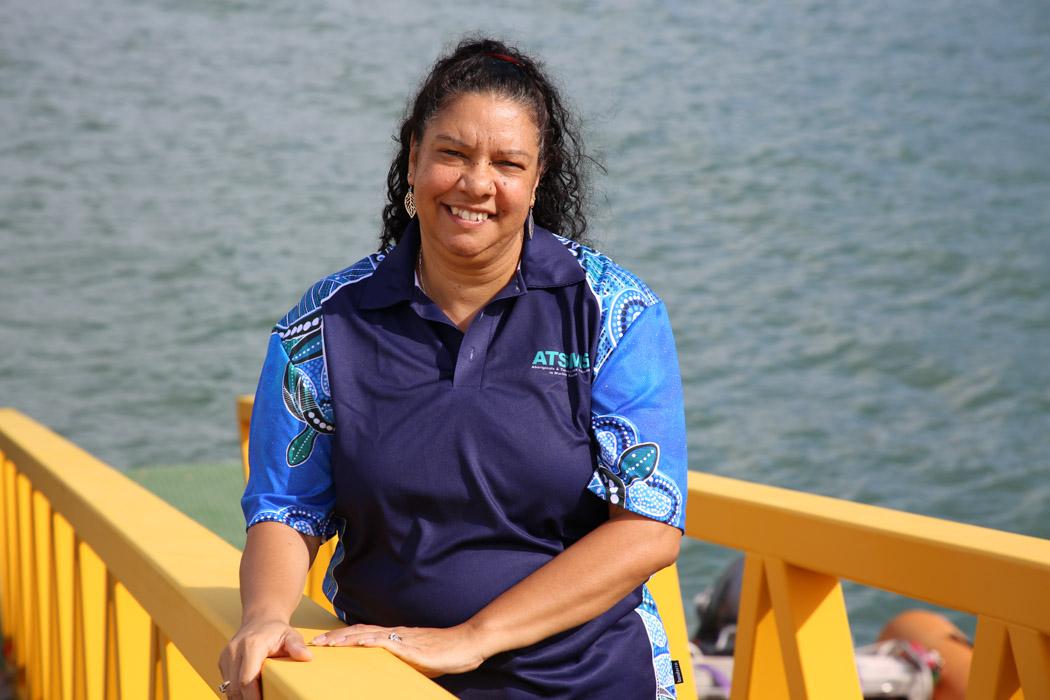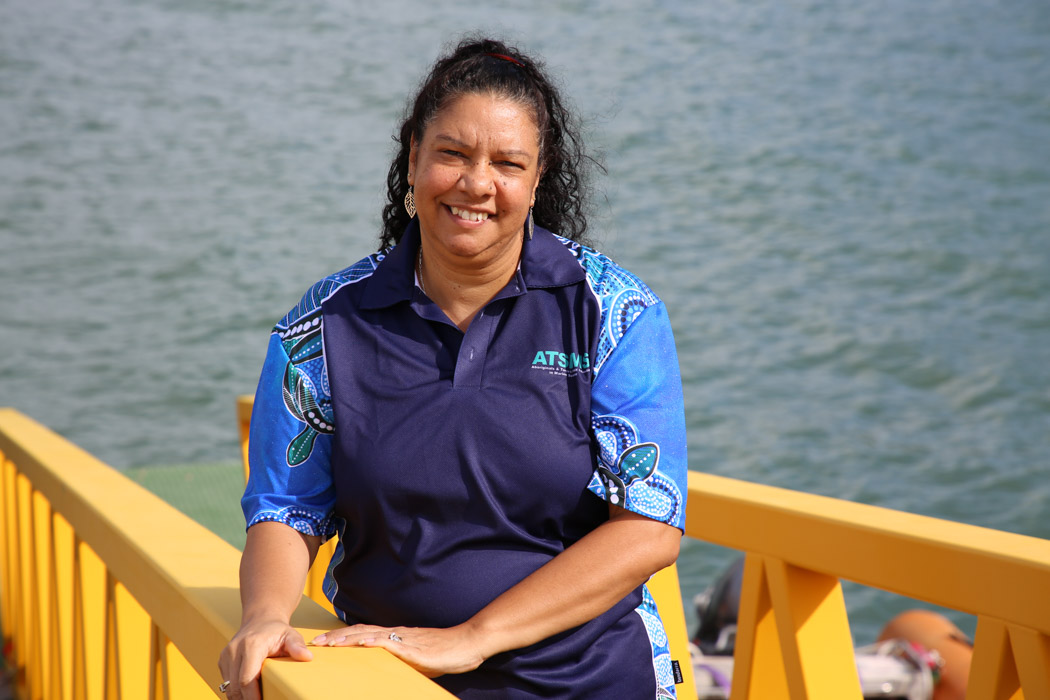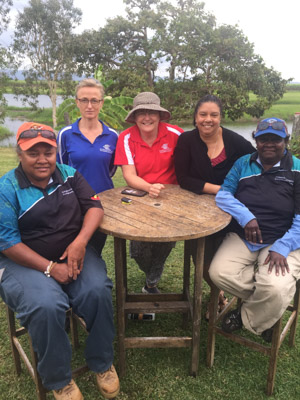The Australian Institute of Marine Science has welcomed its first Aboriginal and Torres Strait Islander engagement co-ordinator Traceylee Forester, and she has been kept busy during her first months on the job.
Lama Lama woman Traceylee Forester has this week promoted NAIDOC Week celebrations across AIMS’ three research sites in Townsville, Perth and Darwin.
She has also begun putting AIMS’ Aboriginal and Torres Strait Islander Engagement Strategy into action, and has already represented AIMS at several events including two national science conferences.
AIMS member of the strategy working group Libby Evans-Illidge, said it was a practical action plan which Traceylee was enacting.
“We wanted to develop more meaningful relationships with the Traditional Owners of the sea country where AIMS works, from Exmouth in Western Australia, right across the top end, and down to the southern Great Barrier Reef,” Ms Evans-Illidge said.
“We acknowledge there are inherent traditional rights and interests in sea country, and we have enormous respect for traditional knowledge and science practices.
“Ultimately, we hope to establish more working relationships with Aboriginal and Torres Strait Islander people, to develop a better understanding of each other and our shared marine environments.”
Traceylee was the first Indigenous board secretariat for the Uluru Kata Tjuta National Park in the Northern Territory and she was also responsible for setting up a Traditional Use of Marine Resources Agreement (TUMRA) for her Lama Lama People of Cape York.
When AIMS was establishing its Indigenous engagement strategy, Traceylee was developing a non-Indigenous engagement strategy to attract greater science and management partnerships on her country.
She has worked with the Great Barrier Reef Marine Park Authority and Queensland Parks and Wildlife Service, to ensure the Lama Lama Traditional Use of Marine Resource Agreement (TUMRA) supported her people to manage their sea country sustainably. She said once the agreement was established, the community had seen the TUMRA programs flourish.
Traceylee is a Lama Lama woman on her mother’s side, whose traditional sea country is Princess Charlotte Bay, in Cape York, and on her father’s side, she belongs to the Nywaigi people of the Ingham area.
She said she was impressed with the Institute’s commitment to the Indigenous Engagement Strategy.
The Aboriginal and Torres Strait Islander flags were raised at AIMS for the first time this year and the Bindal Traditional Owners performed a traditional smoking ceremony at the Cape Cleveland research site.
Traceylee was also excited to welcome Aboriginal and Torres Strait Islander Marine Science students to AIMS and the National Sea Simulator in May, where the students got hands-on with everything from the latest drone technology, to 6000-year-old coral cores, and marine research projects.
”It was good to see 23 Indigenous rangers from across Queensland, including some of my own family members, complete their compliance training under the guidance of the Great Barrier Reef Marine Park Authority.
The nationally-accredited Certificate IV in Government Investigations (Regulatory Compliance) means these rangers can now join fisheries patrols in the Great Barrier Reef Marine Park.
Traceylee represented AIMS at the 32nd annual National Estuaries Network meeting in Darwin and the Australian Marine Sciences Association conference in Adelaide, where the benefits and challenges of scientists working more closely with traditional land and sea owners were discussed.



